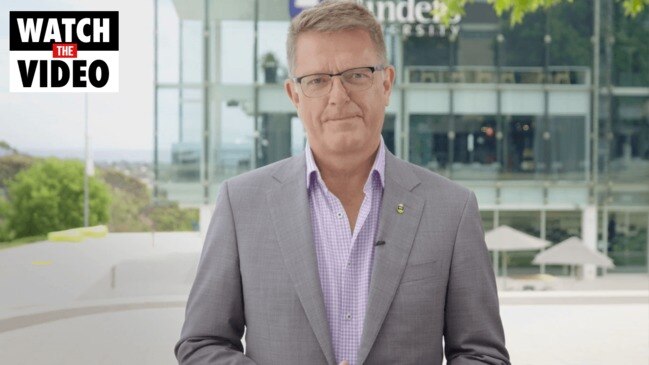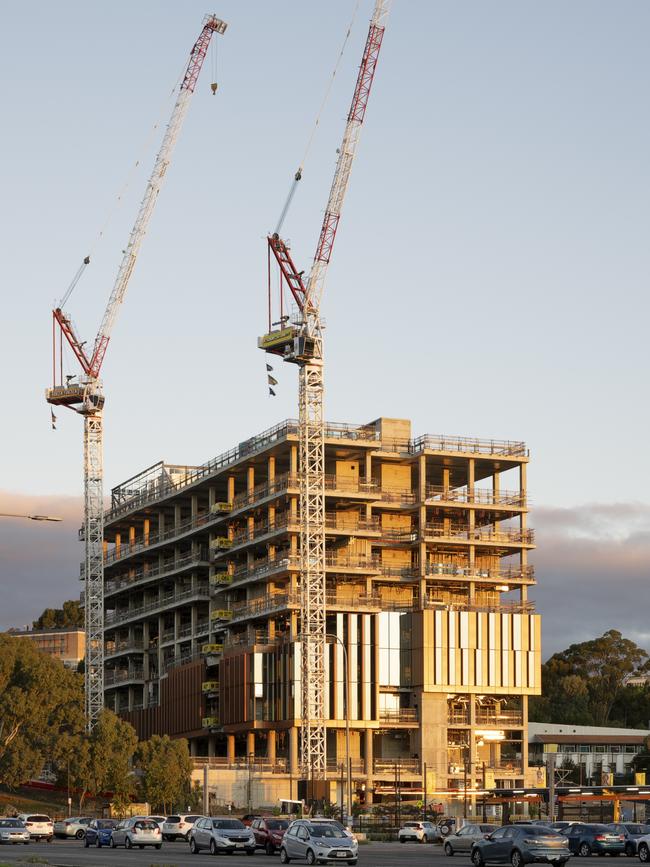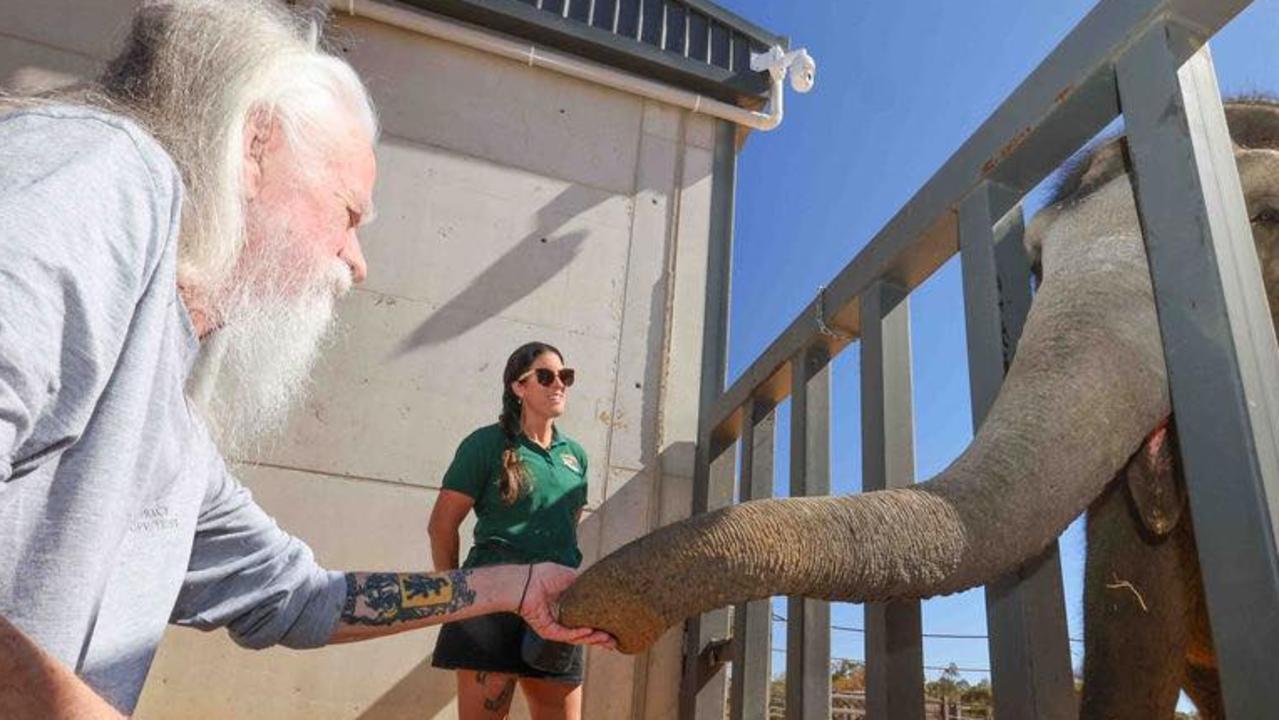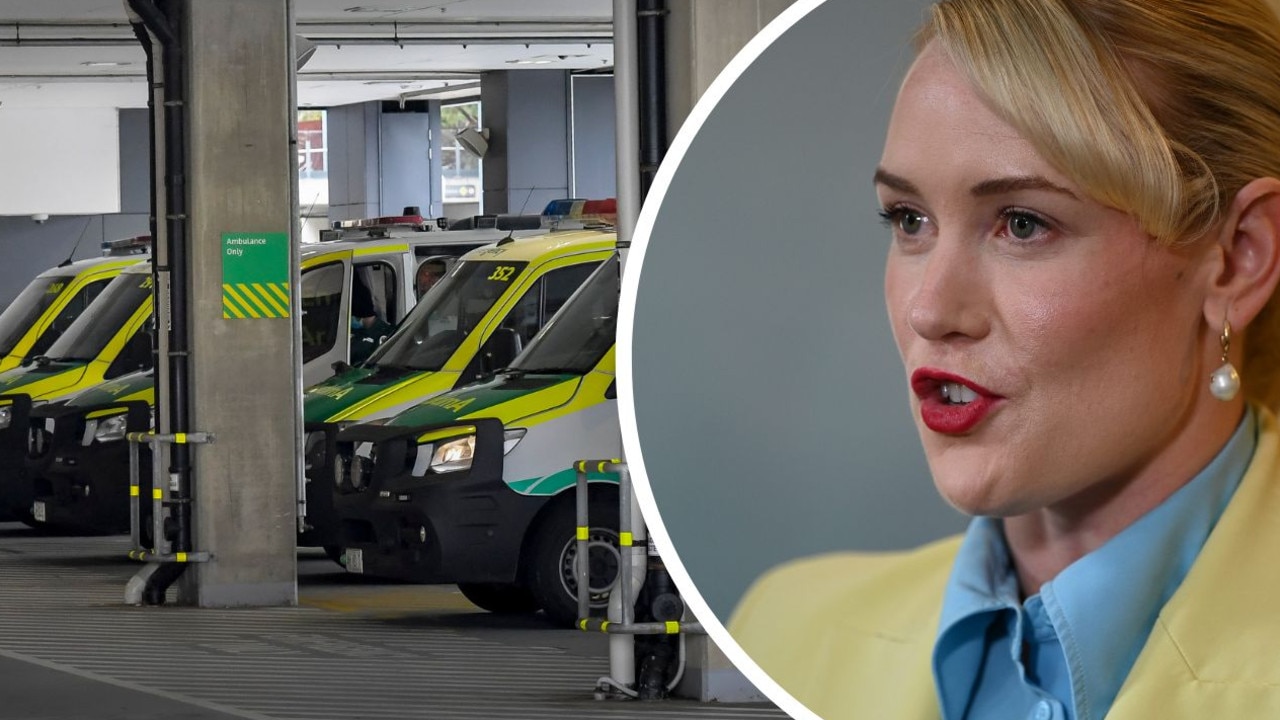Flinders Uni $280m Health and Medical Research Building tops out
Bringing together world-class medical researchers and health services, Flinders Uni’s $280m project has reached a massive milestone and is on track to open soon.

SA News
Don't miss out on the headlines from SA News. Followed categories will be added to My News.
The newest star on Adelaide’s skyline has topped out with Flinders University’s $280m Health and Medical Research Building project reaching its highest point.
The 51m, 10-storey building at Bedford Park will house more than 600 researchers, clinicians, and staff when it opens next year with a mission to translate world-class research into better health and wellbeing outcomes for the community.
It will be the flagship of the wider Flinders Village development – southern Adelaide’s biomedical research precinct bringing together researchers, education, accommodation and services while driving $1.5bn in economic activity including 600 direct and 20,000 indirect jobs.


The building will feature one of South Australia’s largest suite of physical containment laboratories spread across five floors and be equipped with state-of-the-art cell imaging equipment for researchers.
Located adjacent to Flinders Medical Centre and Flinders Private Hospital, the building will obtain all of its electricity from renewable sources.
Premier Peter Malinauskas and university Vice Chancellor Professor Colin Stirling were due to sign the building’s uppermost beam at 11am.
Mr Malinauskas predicted the building “will utterly transform the south and this biomedical precinct, while building on the university’s 50-year partnership with the Flinders Medical Centre, just metres away.”

“The state-of-the-art facility will be a game-changer for health and medical research in South Australia, complementing the government’s generational investment to rebuild the state’s health system,” he said
“Today’s topping out is a great milestone for the advancement of health and medical research in our state, and I congratulate Flinders University for their research excellence, innovation and commitment to the health and wellbeing of our community.”
Prof Stirling noted in the past five years, Flinders’ research income has grown by more than 145 per cent spearheaded by an expansion in the medical, nursing and health sciences disciplines.
“Building on our proud history as a pioneer in innovative health as the first medical school in the nation to be integrated into a public hospital, the Health and Medical Research Building is a $280m gift by the university to the people of South Australia,” he said.
“Our research will tackle major health challenges of the 21st century, including early determinants of disease, the burden of chronic disease and pain, Indigenous health, maternal and child health and the search for increasingly effective treatments for diabetes, infection and cancers.”
Researchers are thrilled to see the new building taking shape.
Professor Claire Roberts, a placental biologist who leads the Pregnancy Health and Beyond Laboratory said researchers had “outgrown the space available.”
“The HMRB with its amazing state-of-the-art facilities provides exciting new collaborative research opportunities to help us to make a difference to the health and wellbeing of people everywhere,” she said.




